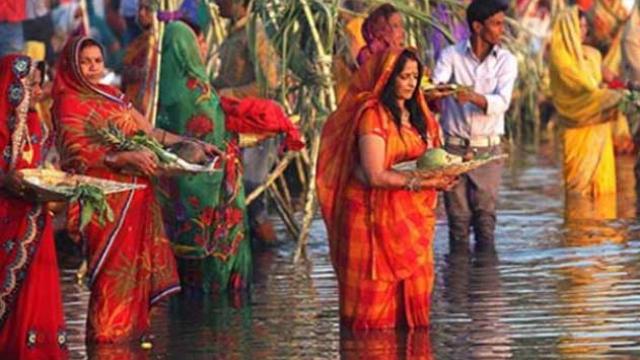There is an enchanting smell of soil that you’ll feel around yourself just after Diwali gets over. And once you come across it, there is no doubt that Chhath Puja has finally arrived, the happiness on the face of people while taking holidays from their respective work for going home is worth watching. More than Diwali, people are much more excited in celebrating the four-day long celebration of Chhath Puja.
The arrival of Chhath Puja can be deduced from the scenes when trains going towards Bihar and Eastern Uttar Pradesh are heavily stocked up with joyous passengers.
The preparations start couple of weeks prior to the festival when the white washing starts in all the houses. The excitement on everyone’s face is worth watching. Be it children or elder ones of the house, all are just colored in the color of Chhath. Songs of Sharda Sinha and Anuradha Paudwal (famous Bhojpuri singers) fill every household.
Here are some of famous Chhath songs that will be nostalgic to some and for some it will help in understanding the feeling that revolves around it:
Going into the cultural aspect of it, Chhath Puja is dedicated to the Sun and his wives Usha and Sangya or Sandhya in order to thank them for bestowing the bounties of life on earth and to request the granting of certain wishes. It does not involve any idol worship. This festival is not only celebrated by Indian people but by Nepalese too. The rituals of the festival are rigorous and are observed over a period of four days. They include holy bathing, fasting and abstaining from drinking water (Vratta), standing in water for long periods of time, and offering prasad (prayer offerings) and arghya to the setting and rising sun. The main worshipers, called Parvaitin (from Sanskrit parv, meaning ‘occasion’ or ‘festival’), are usually women. However, a large number of men also observe this festival as Chhath is not a gender-specific festival. Some devotees also perform a prostration march as they head for the river banks.
Chhath puja is performed on Kartika Shukla Shashthi, which is the sixth day of the month of Kartika in the Vikram Samvat. This falls typically in the month of October or November in the Gregorian English Calendar.
Its history dates back to ancient Vedic texts, as the Rigveda contains hymns worshiping the Sun god and describes similar rituals. The Goddess who is worshipped during the famous Chhath Puja is known as Chhathi Maiya.
Chhathi Maiya is known as Usha in the Vedas. She is believed to be the beloved younger wife of Surya, the sun god. In Mithilanchal region, she is also worshipped as “RANA MAI “.
The first day of Chhath starts exactly after four days from Diwali. On this day, people who observe fast take bath at river or pond and prepare lunch (consisting of rice, dal mixed with pumpkin, made in pure ghee).
The second day is known as kharna or kheer- roti or kheer-puri. The people observe fast for the entire day without taking even water and eat kheer-roti as dinner after offering it to the rising moon and Goddess Ganga. This is the only time when they eat or drink anything from the starting of the day till the day ends.
The third day is the main festival day of Chhath. The devotees maintain ‘nirjal vrat’ (fast without even taking a drop of water). It mainly consist of going on river bank and offering ‘argha’ ( offering of fruits and sweets in winnow ) and surya namaskar to the setting sun followed by the next day i.e. fourth or last day event of offering argha and surya namaskar to the rising sun. The fast then comes to an end after offering argha to rising sun.
This is the only festival which signifies both the rising and setting sun.
The festival of Chhath that used to be only celebrated in fewer parts of northern India predominantly in Bihar, Eastern UP, Jharkhand etc. has now become a national phenomenon and migrants from these places have started celebrating it with great joy and pomp.
